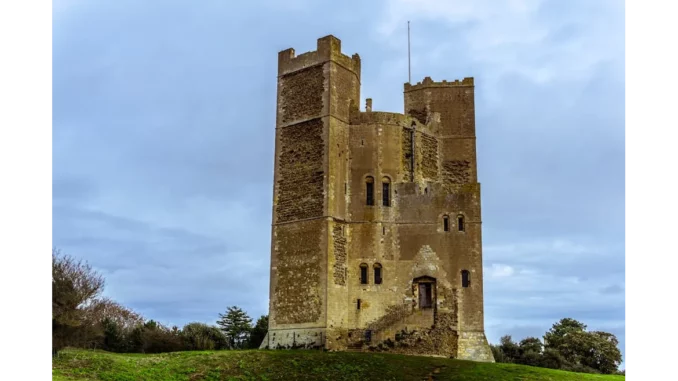
In the tranquil village of Somersham, a significant dialogue is unfolding about the future of sustainable architecture. At the heart of this discussion is a proposal for a self-built eco-house designed to meet Passivhaus standards, a benchmark for energy-efficient buildings. The project has the potential to set a new standard for eco-friendly design, yet it also poses pertinent questions about the harmonious integration of contemporary architecture within historic landscapes.
Successful low-energy building design hinges on careful planning. Focus360 Energy can help.
The site for the proposed eco-house is strategically located within the ‘Town Physical Limits Boundary’ as identified on Suffolk Coastal’s adopted Proposal Map. While this designation typically favours development, the greenfield status of the site and its proximity to a Site of Special Scientific Interest (SSSI) present distinct challenges. An Ecological Assessment has been conducted to guide the development, ensuring that it remains sympathetic to the local environment, particularly the reptile protection zone that links to the adjacent heathland.
The design philosophy for the eco-house is rooted in a comprehensive understanding of its surroundings. The area is characterised by low-density housing, lush front gardens, and mature trees, with a landscape-driven sense of place rather than a dominant architectural style. The proposed dwelling aims to preserve this character by using natural materials and including single-storey extensions and outbuildings that harmonise with the existing environment. This approach seeks to demonstrate how contemporary sustainability can coexist with traditional rural settings.
However, the site’s proximity to Tudor Grange, a Grade II-listed building with historical significance, has sparked considerable concern. Historic England has voiced apprehensions that the modern design of the eco-house is “dramatically out of step” with the traditional architectural vernacular of rural Suffolk. The proposed access route, which passes near Tudor Grange, adds to these concerns, prompting suggestions to reroute access from Hall Lane to diminish potential impacts on the historic context.
This scenario underscores the ongoing tension between architectural innovation and heritage preservation. On one hand, the eco-house embodies a progressive vision for sustainable living, potentially serving as a prototype for future developments. Its adherence to Passivhaus standards ensures minimal energy consumption, aligning with global initiatives to reduce carbon footprints and address climate change. On the other hand, assimilating modern architecture into a historically rich environment prompts legitimate concerns about visual impact and cultural conservation. The challenge lies in striking a balance that honours both the past and the future, requiring not only careful design but also meaningful community engagement.
Local residents and stakeholders are encouraged to contribute to the consultation process, offering insights on how best to merge modern sustainability with traditional aesthetics. Their involvement is vital in shaping a development that respects historical contexts while embracing eco-friendly principles. This community dialogue is not just about a single project but is reflective of broader themes in architecture and urban planning.
As communities across the globe confront the need for sustainable development, the lessons drawn from the Somersham project could inform best practices for integrating new builds into existing landscapes. The decision on this planning application will not only affect the immediate community but also contribute to the evolving narrative of sustainable architecture. It serves as a focal point for discussions on sustainability, heritage, and community involvement, underscoring the complex yet essential dialogue between preserving historical integrity and fostering innovative, environmentally responsible designs.
Whether the eco-house becomes a realised project or remains a topic of debate, the conversations it has sparked are invaluable in advancing our understanding of modern architecture’s role in a rapidly changing world. The outcome will set a precedent for future projects, highlighting the importance of balancing innovation with preservation, and community engagement with architectural development.


Be the first to comment